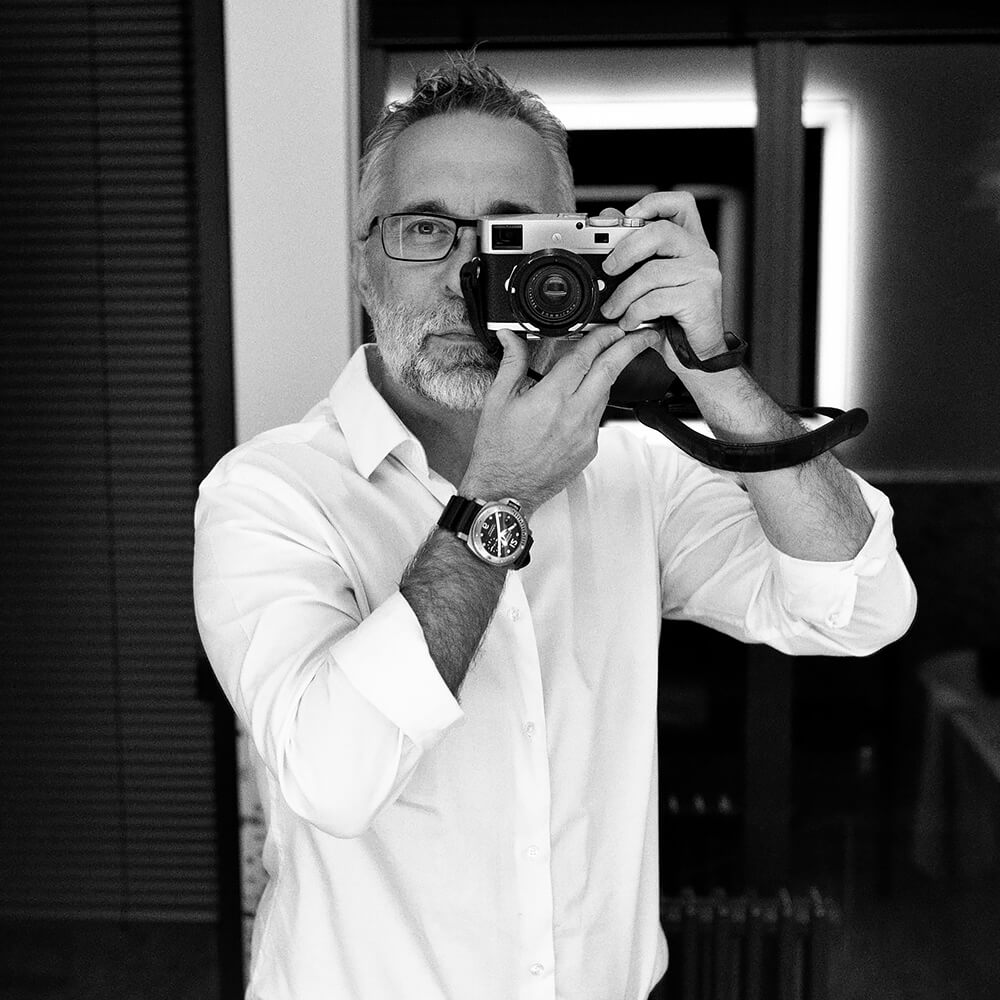Laurent Delhourme was born in Bordeaux (France) in 1968. After studying visual media, he became a self-taught photographer. He spent five years as an assistant at
ELLE and Daylight studios, as well as for various fashion photographers, before embarking on a career as a portrait photographer in 1998. His work has since appeared in various magazines, corporate projects and advertising campaigns.
At the same time, he moved into film in 2001 and made numerous documentaries for France TV / Canal+. He has covered various topics, including the Moudawana law in Morocco for the protection of women, the Madrid train bombings, abandoned street children in Budapest, the Women on Waves pro-choice organisation in Portugal, Carlos Ghosn in Japan and cotton farming in South Africa...
He has also worked with the press agency
CAPA on reports and corporate videos for Aigle, Total, Renault, Orange, Alcatel and EDF.
For almost 20 years, Laurent has roamed the streets of Paris, Leica in hand. He tries to capture the emotions and poetic dimension of people who cross his path. All of his photos are linked to a story, a narrative, a unique moment. Laurent draws inspiration from the work of
Elliott Erwitt,
Garry Winogrand and
Henri Cartier-Bresson, taking his place in a long line of humanist photographers.
He photographs people in the street and observes them without bias or judgement. Laurent seeks to capture what is invisible in their daily activities. Far from using a journalistic approach, he aims to document his times.
In the press
Observer and chronicler of modern life, Laurent Delhourme's approach is part of the lineage of 20th century humanist photography.
Lovers of images of Erwitt, Frank, Davidson, Weiss, Franck, Cartier-Bresson, Mark, Ronis, Freed, Evans, Maltête, Winogrand, Meyerowitz ...
His universe is inspired by the heritage of all those photographers who knew how to document their time.
He photographs the daily life of his contemporaries, of these anonymous people whom he meets over time in the working-class districts of Paris, on the sidewalks of Fifth Avenue or among the effervescence of Piccadilly Circus,
the emotion remains always intact, lively. by this tireless and visceral desire to freeze unique moments.
Born in Bordeaux (France), he has lived in Paris for over 25 years. At the age of 18, he discovered photography through a friend and it was at the age of 21 that he understood that his passion would make it his profession.
People are the key word in his work, recognized for his portraits, he is the author of numerous advertising campaigns, his photos have been published in various French and international magazines.
When he's not in the studio he continues to develop his art on the streets.
He seeks to capture the invisible in the daily lives of the people he meets. Each of his photos is connected to a story, a story, a unique moment.
These photographs concentrate humor, burlesque situations and everyday incongruities. If the photographer takes care of his framing, by choice, he never conceives a staging. He is sure that the behaviors of passers-by are
interesting enough to let them express themselves in their entirety. He captures his images on the fly. Immediacy is his motto.
In his early days, a book changed his view of the world in a book by Elliott Erwitt (Photographs 1946/1988),
I was young and had never seen anything like it. For me it was a revelation!
I discovered through Erwitt's work a true philosophy of life that has always fascinated me Laurent confides.
This book, which he consults regularly, is still his bible today.
Unlike his work as a portrait painter which requires mastering all the parameters of the shooting, for Laurent street photography is a moment of freedom, he lets himself be carried away by the people he meets and the emotions he meets.
He feels. He walks instinctively, feels, he likes to be surprised, he captures the mundane in his daily life as discreetly as possible with his Leica M or his Leica Q. Working mainly at 28 and 50 mm he makes sure never to disturb the scene
he photographs "I try to make myself transparent so as not to interfere with my environment".
Laurent Delhourme has exhibited on numerous occasions, notably at the Paris photo fair (Grand Palais in Paris) and at the art photography festival in Arles (France).
He released his first book Macadam Paname in October 2020 at Editions Hemeria, a black and white book on Paris.
He is currently in preparation for a second book.
